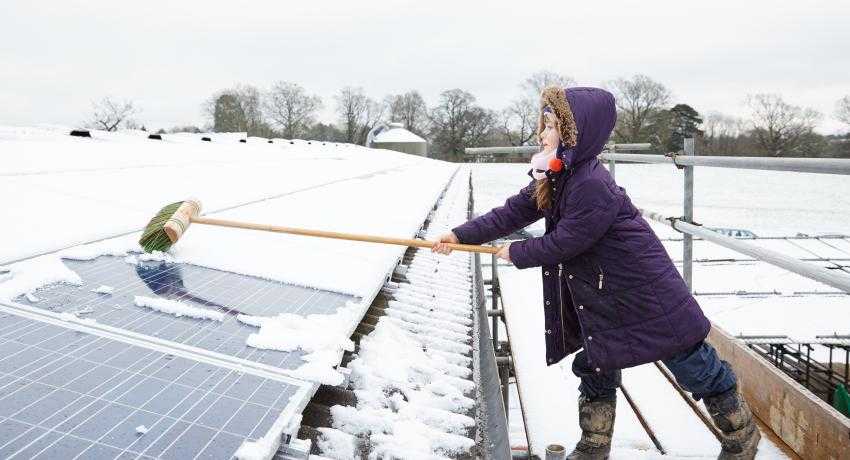What is the Effect of Snow on Solar Panels?
Innovative technologies like solar cells and panels are propelling us towards cleaner and greener sources of energy. However, the pertinent question is whether the benefits of solar energy are only for those living in the sunnier states of America; like California, Florida, or Texas? Is solar a feasible and practical option for states that have snowy winters?
Let us discuss this in detail, and try to answer some questions regarding the use of solar during snowy winters.
Do Lower Temperatures Affect the Efficiency of Solar Panels?
Essentially, solar panels convert light from the sun into electricity, no matter how cold or hot the weather is. In fact, photovoltaic panels are more efficient in colder weather because electrical conductivity improves at lower temperatures.
Solar panel manufacturers test the panels at 41 degrees Fahrenheit and these panels achieve their optimum output at lower temperatures. The manufacturers specify peak temperature ratings for their solar panels. The panel efficiency starts decreasing above the rated peak temperatures.
In the lower temperatures during winters, the solar panels perform at their peak efficiency. However, fewer hours of sunlight in the winters offset the rise in efficiency, which means the winters produce as much energy as the summers do.
The solar energy output depends greatly on your latitudinal location. A simple hack is to enter your zip code to find out the estimates for monthly solar output at your location.
How Does Snow Affect the Solar Panel Energy Outputs?
Of course, your panels will not produce energy when covered under a thick layer of snow. However, factors including certain qualities intrinsic to the design of solar panels help neutralize or mitigate the adverse impact of snow:
Installation of Solar Panels at an Angle
This makes it easier for the snow to slide off the panels. Options of seasonal or continuous tracking are available for the panels. You can change the panel angle with both these systems, and a steeper angle during winters can help maximize the sun rays, making it harder for the snow to accumulate.
The Dark Silicone Cells in Solar Panels Absorb Heat
The dark solar panels trap the sun’s rays and the resultant heat helps melt the snow. Typically, the temperature of solar panels is 20°C (36°F) warmer than the surrounding temperature. So even a very small amount of sunlight helps the solar panels to warm up and accelerate the melting of snow.
The Anti-Soiling Properties of Snow
This characteristic of snow makes it good for your solar panels as it provides a virtually free cleaning service when the snow melts off your array. This is especially helpful in the drier parts of the country where dust tends to build upon the panel surface, and compromises the array’s efficiency. Owing to the anti-soiling properties of snow, you get cleaner panels that work at a higher efficiency.
The Albedo Effect
This is a phenomenon where a portion of sunlight is reflected back into the atmosphere when it hits certain surfaces. Due to the albedo effect, solar panels surrounded by snow can absorb up to two times the amount of light, resulting in an increase in the energy output of your solar panels.
Let It Snow
Overall, snow will not have a dramatic effect on the functioning and output of your solar panels in the winter. Do not risk injury to yourself or damage to the panels by trying to clear them of snow. The long summer days will compensate for any minor loss in production, and you also end up getting a free cleaning service for your panels.
Some of the snowiest states in the country such as New York, New Jersey, and Massachusetts, are amongst the top-ten in terms of solar panel installations in the United States.




